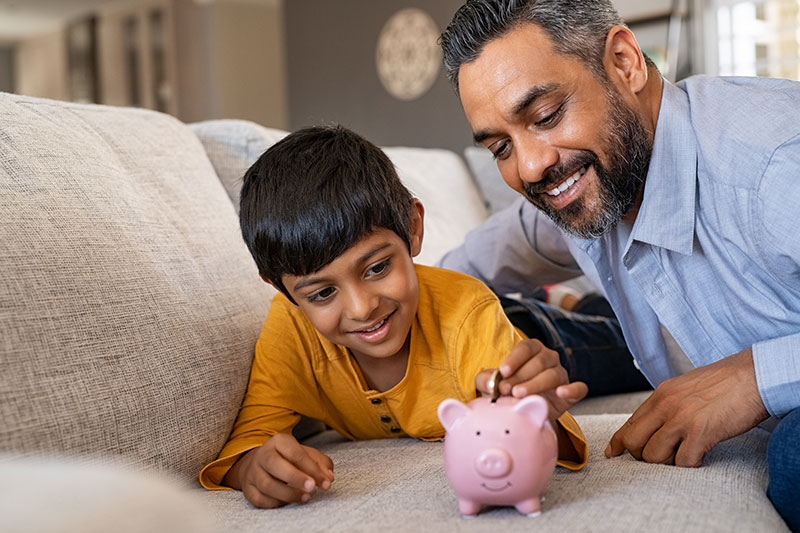It's never too early to start learning about finance. Here are some tips and tricks to help your child navigate and nurture a healthy, lifelong partnership with money.
Walking, reading, swimming. These are all essential life skills we teach our children as they grow up. Another important one to add to the list? Money management.
As parents, when you educate your children on money matters early, you are helping them build good habits that will allow them to make informed financial decisions - decisions can go a long way in securing their financial future and helping them thrive in life.
It may not be an easy concept to teach, but there are many ways to do so through simple, everyday activities.
Start with the basics
Introduce your child to the basics of money as soon as they are able to count. An often-cited study from Cambridge University found that kids can grasp basic money concepts when they are three or four years old. By the time they are seven, many would already have developed certain money habits that will go on to inform their future financial behaviours.
Answer questions like: What is money? What can money do? Where do you get money and where does it go? It is important to not just explain what money is, but also show them how it works.
Turn an ordinary trip to the supermarket into a fun learning experience, for instance. Show your child you are handing money to the cashier when you want to buy something, like an apple. Explain that you got the money from receiving a salary, as a result of working. Let them count out cash to pay for the purchase. All this will help them build an understanding of what money is and how it is used in the exchange of goods in our modern world.
Setting goals
Then, cultivate the habit of saving. Illustrate the benefits of doing so by using examples that they would be familiar with. For example, when they save up a certain sum of money, they can use that money to buy their favourite snack or a new toy.
Give your child his or her first savings goal. One useful approach is to use visual aids in mapping out your child’s savings progress, such as a savings chart or a clear piggy bank - a great way to get kids excited about seeing their money build up physically. Once their piggy bank is filled, take your child to the bank to deposit that money and explain the concept of saving for the future.
Maybank’s Youngstarz account, catering to children and teens under 16 years old, allows parents and children to embark on a savings journey together, with access to benefits like exclusive birthday privileges and complimentary insurance.
However, the younger the child, the shorter the attention span, which is why it remains important to set a goal that is easily attainable within a short period of time.
Navigating finance in a digital world

With cashless payments becoming more prevalent, even in schools, it is important to teach children that digital cash is still money - it doesn’t mean they can spend carelessly just because it is “invisible”.
Show your child how money depletes from their bank account when they make digital transactions. Make use of apps and digital wallets or platforms that can help them, especially the older ones, keep track of their money and financial goals.
Digital money or otherwise, getting savvy with money early is a skill that children can carry with them for life.

the bottom line:
Help your child get a head start on cultivating good money habits by learning how to manage their finances early.
 Linkedin
Linkedin Facebook
Facebook Email
Email Whatsapp
Whatsapp Telegram
Telegram
